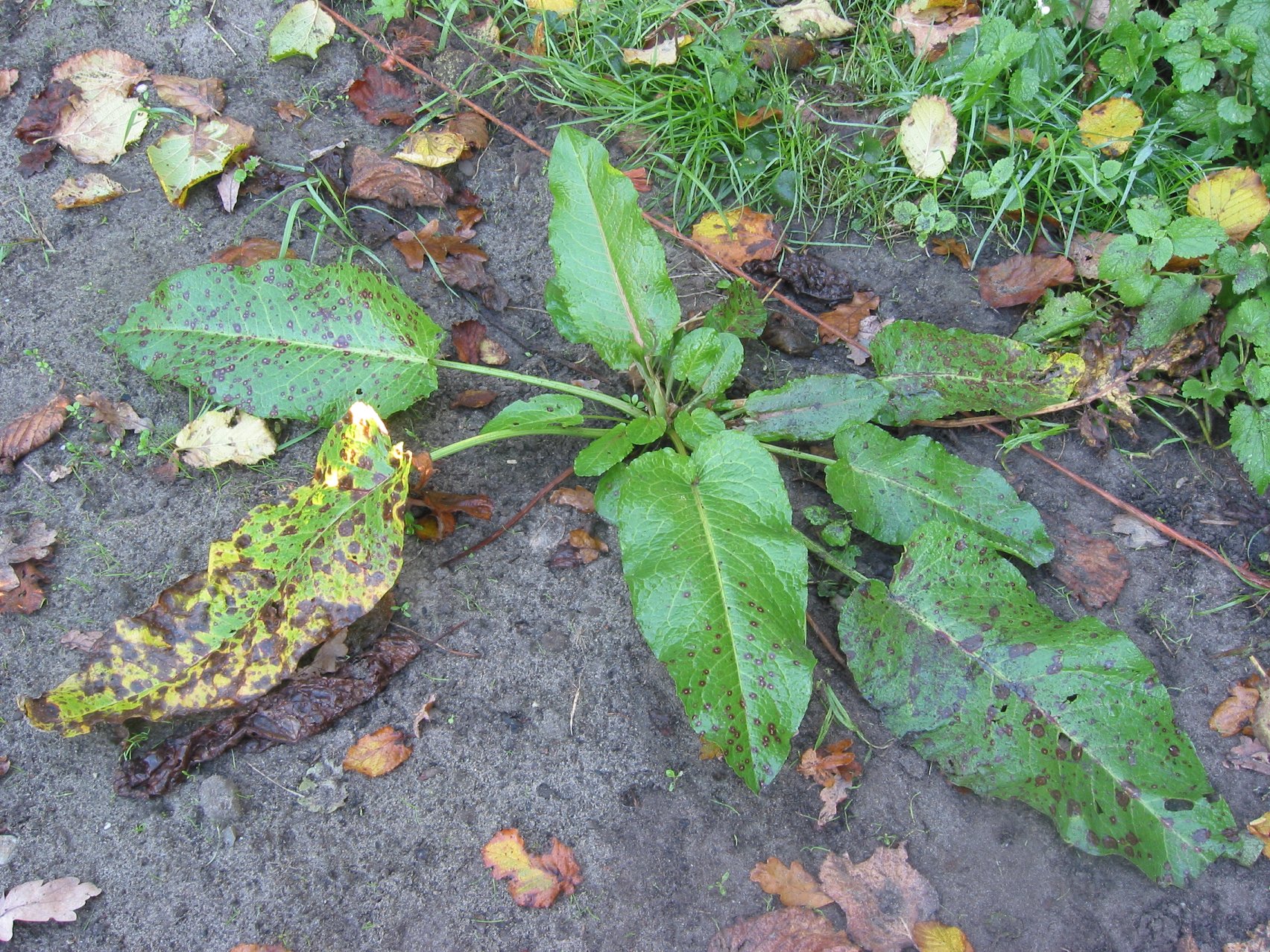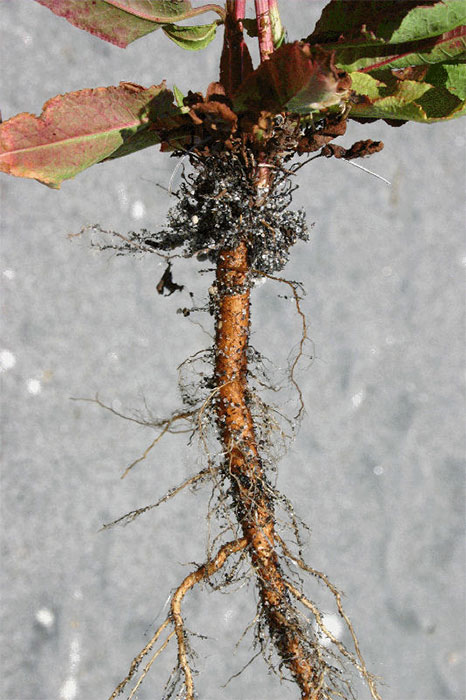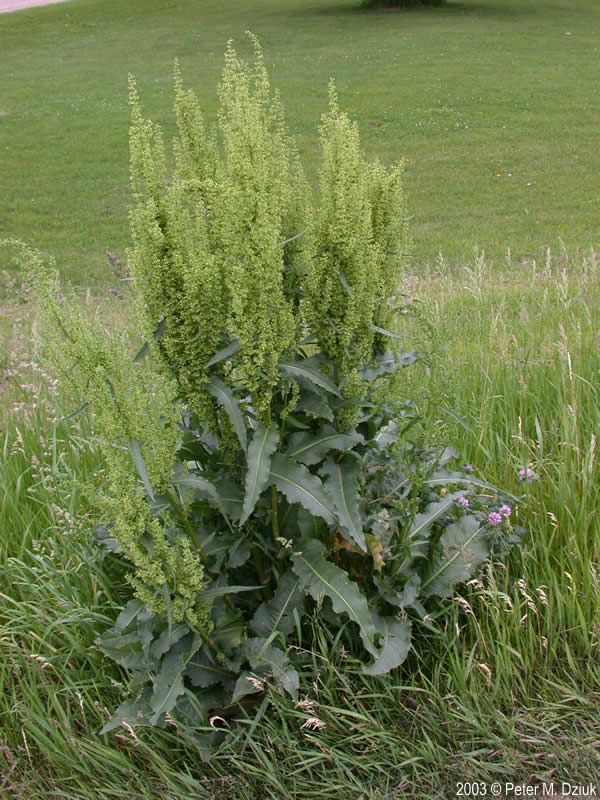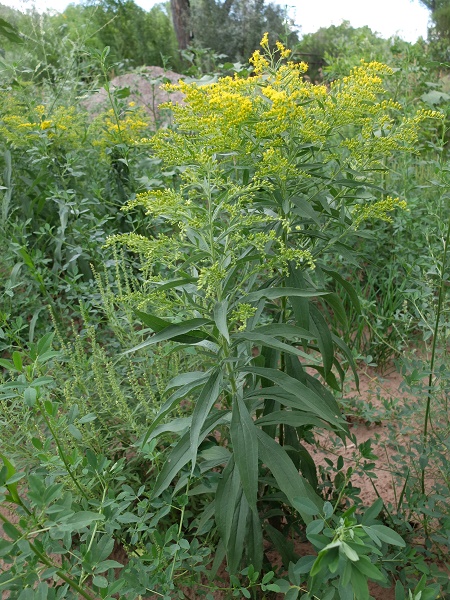Introduced species: Dock (Rumex crispus and R. obtusifolius)
Characteristics: These two common dock species are perennial members of the buckwheat family. Curly dock (R. crispus) may grow up to 1 m (3ft), while bitter dock (R. obtusifolius) may reach 1.5 m (5 ft). Leaves of these plants are fairly large (up to 30 cm, or 1 ft), though frequent mowing–a common fate when these plants occur in yards–will greatly reduce both the height of the plant and the size of the leaves. Curly dock leaves are all in a basal rosette, while bitter dock produces leaves on the stalk as well; the point where the leaf comes away from the stalk has a distinctive sheath (“ocrea”) around the stalk, which is characteristic of plants in this family. Both species are very tenacious, owing to a taproot that seems to reach the Earth’s core (in point of fact, the root can be as long as the plant is tall!). Small, greenish flowers are borne on tall stalks; they often turn red when mature. Once pollinated, these produce the plants’ abundant seeds, which are brown or reddish-brown. Leaves and seeds of the plant are edible (though the leaves should only be eaten in very small quantities, as they have high oxalic acid levels. Seeds may be ground into a flour, reported to taste rather like buckwheat but somewhat more bitter. ALWAYS triple-check your identification before consuming any plant.)
Spread: Both of these dock species spread by seed. The seeds are enclosed in a capsule that allows them to float on water and catches readily in fur and clothing; these characteristics (and the movements of the largely unwitting mammals–think Homo sapiens, in particular–whom the plants employ for transport) have allowed the plant to become widespread in temperate zones throughout the world.
Control: Regular mowing of these plants will prevent them from being able to flower and set seed. Permanent control involves removing the entire plant including all of the taproot, which–in addition to being quite substantial–is easily broken (another clever adaptation), leaving the remaining portion to regrow. NOTE: There are a couple of native dock species in this area (western dock and willow-leafed dock); while these are primarily wetland species that are unlikely to turn up randomly in your yard, you’ll still want to be sure of your ID before doing any removal.
Native replacement: If either of these is growing in your lawn, you probably won’t be looking to replace it. On the off chance that you have a raingarden where one of these is growing, either of the native docks would make excellent replacements. For other (un-mowed) locations, Canada goldenrod (Solidago lepida var. salebrosa) is an outstanding, late-flowering perennial for pollinators that will do well in a variety of habitats.




